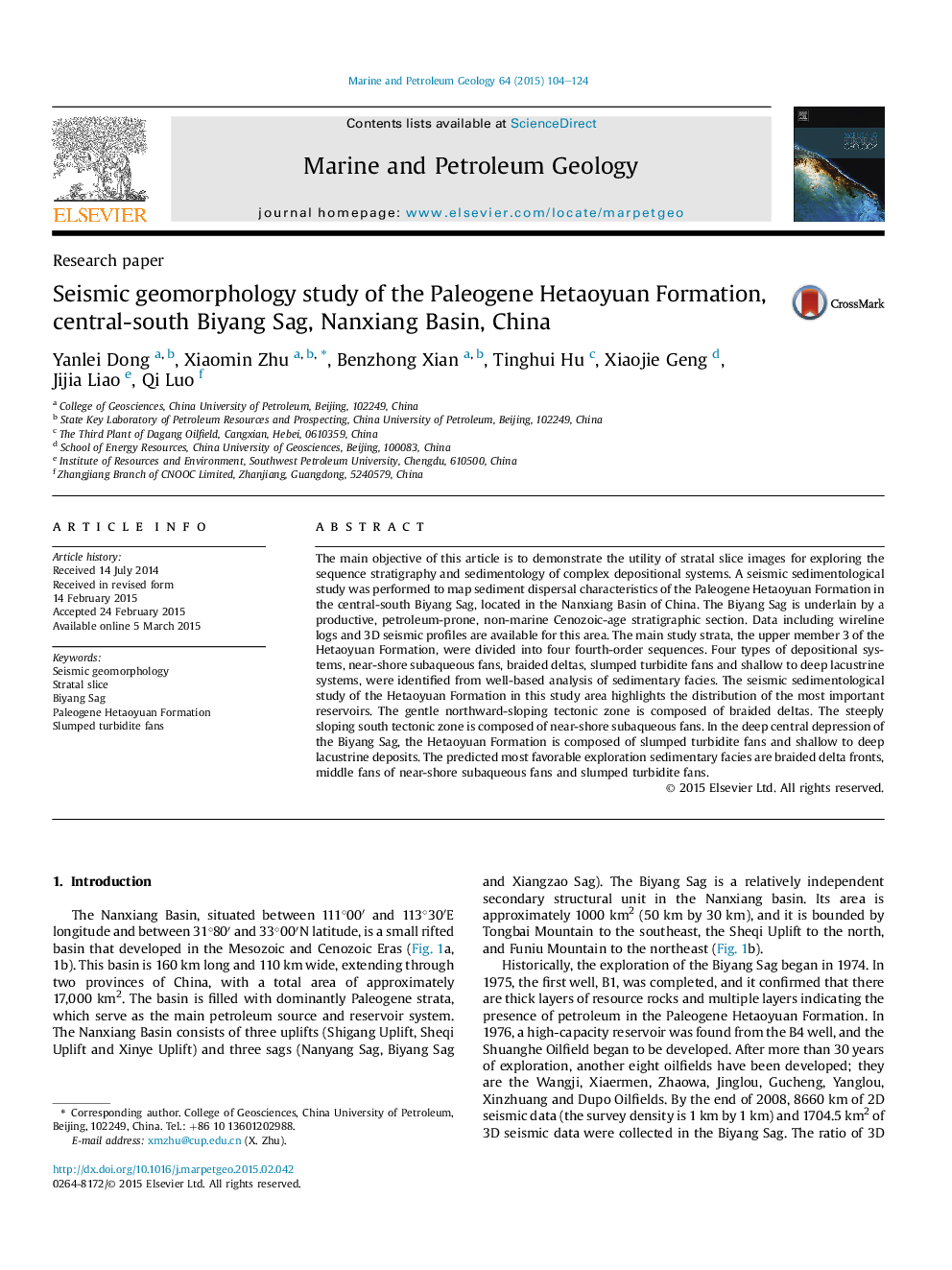| Article ID | Journal | Published Year | Pages | File Type |
|---|---|---|---|---|
| 6435142 | Marine and Petroleum Geology | 2015 | 21 Pages |
â¢Reveal high-resolution sediment dispersal characteristics.â¢Indicate the depositional evolution history.â¢Better delineation of sand bodies after seismic geomorphology study.
The main objective of this article is to demonstrate the utility of stratal slice images for exploring the sequence stratigraphy and sedimentology of complex depositional systems. A seismic sedimentological study was performed to map sediment dispersal characteristics of the Paleogene Hetaoyuan Formation in the central-south Biyang Sag, located in the Nanxiang Basin of China. The Biyang Sag is underlain by a productive, petroleum-prone, non-marine Cenozoic-age stratigraphic section. Data including wireline logs and 3D seismic profiles are available for this area. The main study strata, the upper member 3 of the Hetaoyuan Formation, were divided into four fourth-order sequences. Four types of depositional systems, near-shore subaqueous fans, braided deltas, slumped turbidite fans and shallow to deep lacustrine systems, were identified from well-based analysis of sedimentary facies. The seismic sedimentological study of the Hetaoyuan Formation in this study area highlights the distribution of the most important reservoirs. The gentle northward-sloping tectonic zone is composed of braided deltas. The steeply sloping south tectonic zone is composed of near-shore subaqueous fans. In the deep central depression of the Biyang Sag, the Hetaoyuan Formation is composed of slumped turbidite fans and shallow to deep lacustrine deposits. The predicted most favorable exploration sedimentary facies are braided delta fronts, middle fans of near-shore subaqueous fans and slumped turbidite fans.
